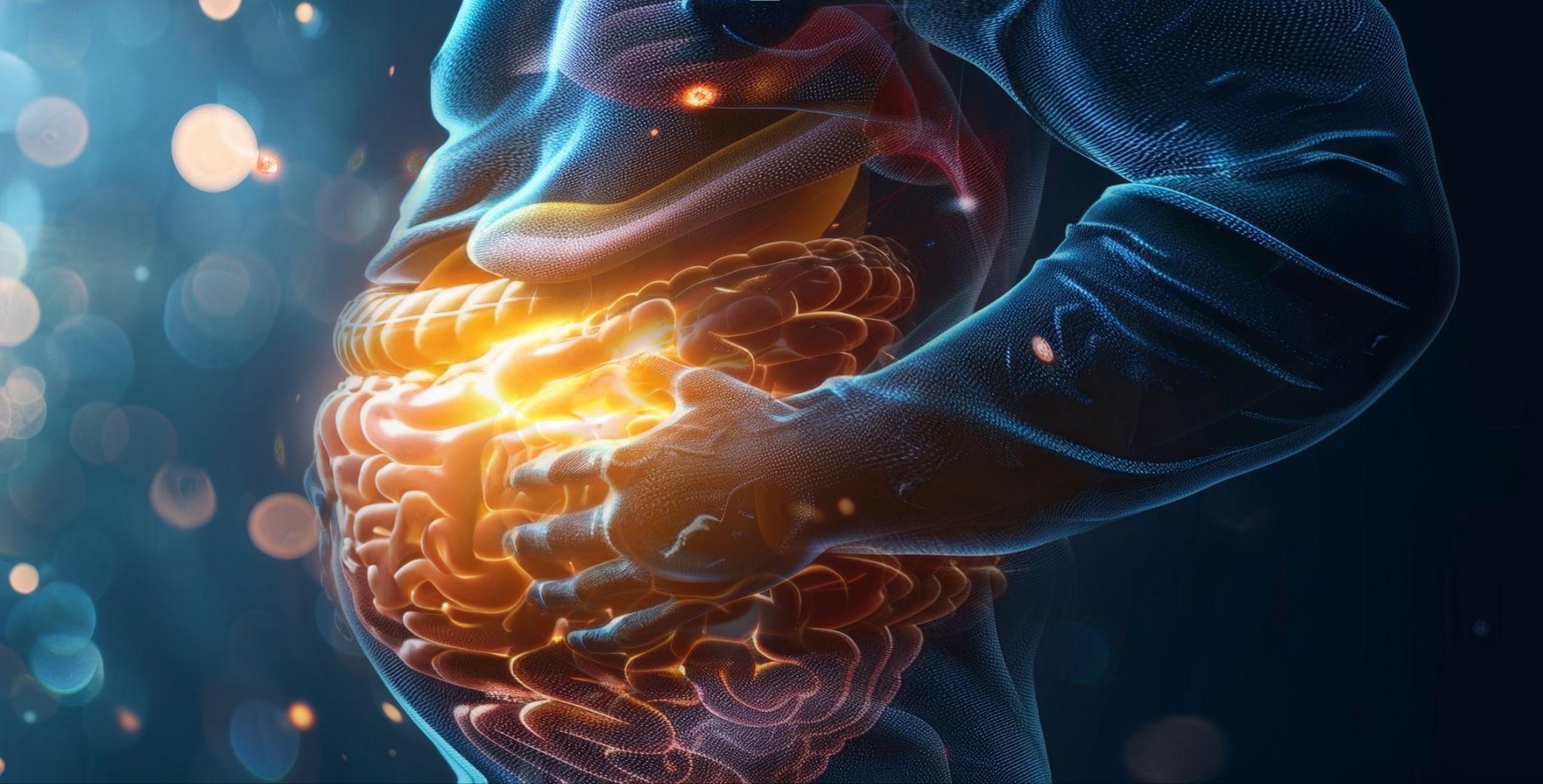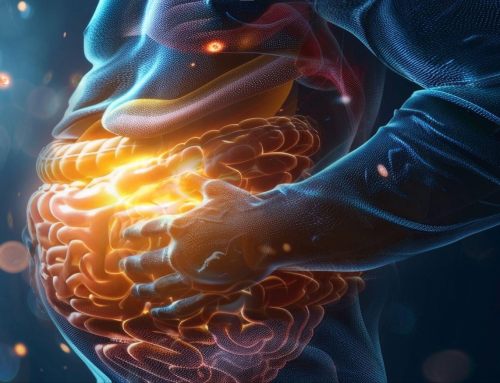Keys Ways the Exposome Impacts Endocrine Function
Beginning in utero and throughout the course of our lives, we are exposed to an extensive amount of environmental influences and insults that can alter integral regulatory processes in the body, and even the expression of our genes (1). According to the World Health Organization (WHO), environmental toxins that impede systemic health include heavy metals (arsenic, cadmium, lead, and mercury), dioxins, pesticides, benzene, infectious agents, and air pollution (2). The body is further exposed to various lifestyle factors such as stress, physical activity, diet, climate, household and self-care products, medications (including antibiotics), and substances (alcohol, tobacco, and other drugs), as well as social determinants of health.
The “exposome” refers to the sum of these exposures, while also encompassing their collective imprint on our biological and cellular health (3).
Multi-omics of the Exposome
The exposome is indeed multifaceted. It has been shown to influence many internal processes in the body, driving alterations in gut microbiota, hormonal signaling, metabolism, inflammation, oxidative stress, and aging. Degree of toxicant status, stress, genetics, nutrition, emotional support, physical activity, sleep, and biochemical individuality all play a role in how these factors influence and alter health and how the body responds (4). Of note, the exposome is implicated in interfering with endocrine function, having effects on various aspects of biological health (1, 3, 8).
Toxic Load Accumulation
Toxic load refers to the accumulated burden of environmental toxins from both exogenous and endogenous sources—all of which contribute to the multitude of the exposome, impeding regulatory processes in the body governed by the endocrine system. Endogenous toxins refer to internal substances produced within the body from detoxification, digestion, energy metabolism, or tissue regeneration, including NH3- ammonia, metabolic end products, endotoxins (such as LPS), inflammatory cytokines, oxidative stress, and microbial metabolites. Exogenous toxins are chemical substances produced outside of the body, including food-borne, environmental, pharmaceutical, and xenobiotic sources. These forms of toxins can be absorbed through contact with the skin, ingestion via the gastrointestinal (GI) tract, and inhalation through the lungs, and need to be eliminated from the body. They are degraded into microbial metabolites, where they can eventually be excreted from the body (5).
Both exogenous and endogenous toxins can interact with endocrine receptors, impeding hormonal balance. These chemicals cause modifications in the functions of hormones by interfering with appropriate cellular signaling. Exogenous toxins, for instance, bind to the same receptors as hormones that control development, regulation, and function of adipose cells. While they act similarly to hormones, they do not act as efficiently in modulating and carrying out their widespread, intricate functions.
Endocrine Disruptor Chemicals (EDCs)
Endocrine disruptor chemicals are widely distributed in our daily life and environment. The National Institutes of Health (NIH) estimates that there are nearly 85,000 human made chemicals, with at least 1,000 identified as endocrine disruptors (6). Exposure encompasses air pollution, chemicals from personal care products, such as cosmetics, as well as toxins from foods (7). Lead, mercury, toluene, perchlorate, bisphenol A (BPA), phthalates, pesticides, perfluorochemicals (PFCs), polychlorinated biphenyls (PCBs), and polybrominated diphenyl ethers (PBDEs) have all been implicated as endocrine disruptors (1).
Various aspects of biological functioning are impeded by EDCs resulting in alterations in physiology, metabolism, development, and reproduction. EDCs bind to hormonal receptors affecting signaling and activity of enzymes involved in these processes.
Epigenetic Modifications – Genome + Exposome
Research shows that a variety of epigenetic mechanisms are induced from exposure to endocrine disruptor chemicals including differential methylation, chromatin organization, and structural changes (8). Environmental chemicals have been implicated to modify multiple biological processes affecting gene expression, notably including DNA methylation, and miRNA expression (3).
A number of chronic health conditions have been associated with increased exposure to EDCs, including obesity and related metabolic disorders (9). The chemical nature of these exposures has been demonstrated to induce alterations in lipid and body metabolism, contributing to oxidative stress, inflammation, hormonal imbalance, and weight gain. Largely this is suggested to be the result of alterations induced in hormonal signaling, coupled with the body’s compromised ability to appropriately detox, leading to more build-up in the system. This also increases the likelihood that toxins will be stored in adipose tissue, as they are not excreted properly from the body.
Microbiome changes have also been evidenced in increased exposure to EDCs. This is significant as microbiota, similar to hormones, have vital roles in metabolism, detox, and influencing genetic expression.
Cross Talk Between Different Systems
The endocrine system communicates with all other systems in the body. Crosstalk occurs between the microbiome, metabolic, nervous, and immune systems. Thus, disruptions in the endocrine system largely impact the collective functioning of these systems, which can further wreak havoc in the body. Hormones produced by the pancreas modulate blood sugar, whereas those synthesized by the thyroid largely regulate metabolism. Glucocorticoids (cortisol) secreted in the adrenal cortex govern stress and immune response, while sex hormones – estrogen, testosterone, progesterone, and DHEA – modulate neurotransmitter synthesis, microbiome diversity, and immunity in addition to their extensive roles in sexual development, underscoring the far-reaching effects of the endocrine system.
Exposome & Its Effects: Mechanisms & Body Systems Affected
Metabolic & Hormonal Balance – Endocrine disruptor chemicals have been implicated to affect hormonal balance and metabolism, among other cellular processes in the body. EDCs interfere with thyroid function and largely disrupt homeostatic processes related to appetite and weight gain. They have been shown to compromise lipid and blood sugar balance, induce inflammation and oxidative stress, and have also largely been implicated in playing a role in obesity and overall body composition (10, 11, 12). In fact, a growing body of research demonstrates the toxic effects these chemicals can have on the body—referring to them as “obesogens”—further highlighting their strong role in contributing to obesity.
A 2018 clinical study found that individuals with the highest amounts of perfluorinated chemicals in their blood—a group of synthetic chemicals found in a number of consumer products—had lower resting metabolic rates and experienced faster and increased weight gain compared to those with the lowest levels (13).
Endocrine disruptor chemicals have been shown to increase insulin resistance and risk of Type 2 diabetes, among other cardiometabolic risk factors (14, 15). Associations between exposure to various families of these chemicals and components of metabolic syndrome have also been cited in the literature (16). They have additionally been associated with increased reproductive health concerns, as EDCs have been shown to cross and interfere with the placenta. Moreover, through their induced microbiota alterations, EDCs have further been associated with compromised metabolic health.
Inflammation & Oxidative Stress – Chronic inflammation from increased metabolic and oxidative stress, premature aging, and compromised detoxification are also associated with EDCs, further demonstrating their vast, widely distributed effects on the body (17). Mood swings and fatigue have also been associated with exposome factors, in addition to mental health conditions (18). These findings support the importance of one’s environment with regard to their physical and mental health.
Microbiome Diversity & Functions – Alterations in microbiome composition have been evidenced by exposome factors, including reduced microbial diversity, quality, balance, and synthesis of integral molecules for health – such as neurotransmitters, fatty acids, hormones, and vitamins (19). Disruptions of gut permeability have further been noted through reduced expression of tight junction proteins. The gut microbiome, similar to the endocrine system, modulates countless aspects of health, including metabolism, hormonal balance, mood, detoxification, as well as sufficient digestion, absorption, and assimilation of nutrients (20). The microbiome has recently been termed “the second endocrine system” further highlighting these regulatory functions (21). EDCs have been shown to induce gut microbiota alterations, conferring susceptibility to obesity.
In fact, researchers found that gut microbiota transplanted from individuals with obesity induced obesity in mice (22). A further study revealed that the transplant of microbiota from lean individuals improved metabolic endpoints in those with metabolic syndrome (23).
The Importance of Detoxification
With its vast diversity, the microbiome has extensive metabolizing capabilities that can support detoxification and reduce the toxic load on the liver. Detoxification, the process of transforming and removing harmful substances from the body, is integral, especially given the vast amount of toxins we are exposed to throughout the course of our lives. The microbiome can support biotransformation of toxic substances and chemicals, altering their biological effects on the body (24).
Sufficient nutrition and antioxidant support are integral for detoxification, as these processes require nutrients for its distinct phases and pathways. Exercise and hydration are also imperative for appropriate detox. Phases of detoxification include redox and conjugation reactions, mobilization and elimination, antioxidant cycling, as well as conversion or direct elimination.
Chronic disease can result from inadequate detoxification. Bio-individuality is a significant factor to consider regarding the exposome, as we all have different levels of tolerance and sensitivity to toxins. Genetic variants or particular vulnerabilities in our biochemical makeup may exist, making some more sensitive to certain exposures than others. Therefore, variability largely exists relative to the exposome and its effects on the genome and our health.
Some clinical indicators of increased toxic load from EDCs include degeneration of hair, skin, nails, mucous membranes, or reproductive function, as well as multiple chemical sensitivities. Variability in the exposome and its effects exists due to genetics, barrier integrity in the skin and GI tract, GI hyperpermeability, and biotransformation of enzymes (such as nutrients, single nucleotide polymorphisms, or genetic variants) that may require more targeted or aggressive treatments in improving eliminative functions, including urination and defecation.
Reducing Total Exposome Effects: Nutrition & Lifestyle Support
A combination of factors affects the body’s ability to optimally detoxify and reduce the total toxic burden. Being cognizant of what comprises our “exposome”– and doing what we can to limit exposure to these factors is significant. Equally important is supporting our body relative to sufficient nutrient and antioxidant reserves, microbiome support, and high-quality, restorative sleep, while also reducing other forms of stress on the body. Psychological, physical, and emotional stress can all wreak havoc on many of the body’s systems, impeding upon balance and detox capacity.
Consuming a balanced, nutrient-dense, organic, whole-foods diet rich in antioxidants, fiber, and plant compounds is recommended to support detox, microbiome health, and endocrine function (25). Sufficient hydration with filtered water and engaging in regular exercise are important in excreting toxins from the body, as they induce movement and blood flow in the system. Connecting with nature and getting exposure to sunlight in the morning helps in synchronizing the body’s circadian rhythm, supporting hormonal balance and metabolism, while reducing cortisol and inflammation.
Sauna use, yoga, dry brushing, massage, and breath work are further ways of excreting build-up of toxins that can otherwise impede endocrine function. Minimizing the use of plastics, consumption of processed foods, and produce contaminated with pesticides, are also important, as these can further contribute to the burden in the system. Similarly, refraining from alcohol consumption, smoking, and other substances is recommended for reducing toxic load and improving health.
Bio-Individualized Approach
Overall adhering to a personalized treatment protocol that takes into account one’s unique biochemical makeup, genetic variability, and environmental factors— including physical, social and emotional—are also significant in reducing toxic exposure and supporting endocrine and regulatory functions.
We owe it to ourselves, patients, and loved ones to be mindful of all of the factors that contribute to our unique exposome and how they may impact our health in order to make informed decisions that support improved well-being.
Our next in-person conference, Endocrine Typing: Connecting The Dots Between Toxin Load, Weight Loss Resistance and Hormonal Dysfunction will be held on April 19th to April 20th and features an impressive lineup of speakers: Jeffrey Bland, Ph.D., Mimi Guarneri, M.D., Elisa Song, M.D., Carrie Jones, N.D., Deanna Minich, Ph.D., Uma Naidoo, M.D., Thomas Guilliams, Ph.D., Anthony Capasso, M.D., Jade Teta, N.D., and Peter Kozlowski, M.D.
These key presenters will delve into the latest research relative to the impact of toxins on endocrine health with innovative personalized clinical protocols to utilize in practice. You’ll leave with an increased understanding of the interconnectedness between the exposome, endocrine system, and clinical symptoms, as well as how to optimize precision-tailored patient outcomes.
This conference is currently sold out, but you are welcome to join the waitlist. Recordings will also be available for purchase.
References
- Sutton P, Woodruff TJ, Perron J, Stotland N, Conry JA, Miller MD, Giudice LC. Toxic environmental chemicals: the role of reproductive health professionals in preventing harmful exposures. Am J Obstet Gynecol. 2012 Sep;207(3):164-73. doi: 10.1016/j.ajog.2012.01.034. Epub 2012 Mar 8. PMID: 22405527; PMCID: PMC4682569.
- Prüss-Üstün Annette Wolf J., Corvalán Carlos F., Bos R., Neira M. Preventing Disease through Healthy Environments: A Global Assessment of the Burden of Disease from Environmental Risks. World Health Organization; Geneva, Switzerland: 2016. [(accessed on 10 October 2019)]. pp. 1–147.
- Maitre, L., Bustamante, M., Hernández-Ferrer, C. et al. Multi-omics signatures of the human early life exposome. Nat Commun 13, 7024 (2022). https://doi.org/10.1038/s41467-022-34422-2
- Rappaport SM, Smith MT. Epidemiology. Environment and disease risks. Science. 2010 Oct 22;330(6003):460-1. doi: 10.1126/science.1192603. PMID: 20966241; PMCID: PMC4841276.
- Olden K, Freudenberg N, Dowd J, Shields AE. Discovering how environmental exposures alter genes could lead to new treatments for chronic illnesses. Health Aff (Millwood) 2011;30:833–41.
- National Institute of Environmental Health Sciences. Your Environment. Your Health. March, 2024.
- Koppel N., Maini Rekdal V., Balskus E. P. (2017). Chemical transformation of xenobiotics by the human gut microbiota. Science 356 (6344), 1–11. 10.1126/science.aag2770
- Heindel J.J., Blumberg B. Environmental obesogens: Mechanisms and controversies. Annu. Rev. Pharmacol. Toxicol. 2019;59:89–106. doi: 10.1146/annurev-pharmtox-010818-021304
- Mohajer N., Joloya E.M., Seo J., Shioda T., Blumberg B. Epigenetic transgenerational inheritance of the effects of obesogen exposure. Front. Endocrinol. 2021;12:787580. doi: 10.3389/fendo.2021.787580.
- . Di Ciaula A., Portincasa P. Fat, epigenome and pancreatic diseases. Interplay and common pathways from a toxic and obesogenic environment. Eur. J. Intern. Med. 2014;25:865–873. doi: 10.1016/j.ejim.2014.10.012. [PubMed] [CrossRef] [Google Scholar]
- Rudge MVC, Alves FCB, Hallur RLS, Oliveira RG, Vega S, Reyes DRA, Floriano JF, Prudencio CB, Garcia GA, Reis FVDS, Emanueli C, Fuentes G, Cornejo M, Toledo F, Valenzuela-Hinrichsen A, Guerra C, Grismaldo A, Valero P, Barbosa AMP, Sobrevia L. Consequences of the exposome to gestational diabetes mellitus. Biochim Biophys Acta Gen Subj. 2023 Feb;1867(2):130282. doi: 10.1016/j.bbagen.2022.130282. Epub 2022 Nov 24. PMID: 36436753.
- Núñez-Sánchez M.Á., Jiménez-Méndez A., Suárez-Cortés M., Martínez-Sánchez M.A., Sánchez-Solís M., Blanco-Carnero J.E., Ruiz-Alcaraz A.J., Ramos-Molina B. Inherited Epigenetic Hallmarks of Childhood Obesity Derived from Prenatal Exposure to Obesogens. Int. J. Environ. Res. Public Health. 2023;20:4711. doi: 10.3390/ijerph20064711.
- Liu G, Dhana K, Furtado JD, et al. Perfluoroalkyl substances and changes in body weight and resting metabolic rate in response to weight-loss diets: a prospective study. PloS Med.2018;15(2):e1002502.
- Karoutsou E, Polymeris A. Environmental endocrine disruptors and obesity. Endocr Regul. 2012 Jan;46(1):37-46. doi: 10.4149/endo_2012_01_37. PMID: 22329821.
- Di Ciaula A., Portincasa P. Fat, epigenome and pancreatic diseases. Interplay and common pathways from a toxic and obesogenic environment. Eur. J. Intern. Med. 2014;25:865–873. doi: 10.1016/j.ejim.2014.10.012. [PubMed] [CrossRef] [Google Scholar]
- Haverinen E., Fernandez M.F., Mustieles V., Tolonen H. Metabolic syndrome and endocrine disrupting chemicals: An overview of exposure and health effects. Int. J. Environ. Res. Public Health. 2021;18:13047. doi: 10.3390/ijerph182413047.[PMC free article] [PubMed] [CrossRef] [Google Scholar]
- Heindel J.J., Newbold R., Schug T.T. Endocrine disruptors and obesity. Nat. Rev. Endocrinol. 2015;11:653–661. doi: 10.1038/nrendo.2015.163.
- Pero-Gascon R, Hemeryck LY, Poma G, Falony G, Nawrot TS, Raes J, Vanhaecke L, De Boevre M, Covaci A, De Saeger S. FLEXiGUT: Rationale for exposomics associations with chronic low-grade gut inflammation. Environ Int. 2022 Jan;158:106906. doi: 10.1016/j.envint.2021.106906. Epub 2021 Oct 1. PMID: 34607040.
- Pries LK, Moore TM, Visoki E, Sotelo I, Barzilay R, Guloksuz S. Estimating the Association Between Exposome and Psychosis as Well as General Psychopathology: Results From the ABCD Study. Biol Psychiatry Glob Open Sci. 2022 Jun 1;2(3):283-291. doi: 10.1016/j.bpsgos.2022.05.005. PMID: 36325038; PMCID: PMC9616253.
- Hampl R, Stárka L. Endocrine disruptors and gut microbiome interactions. Physiol Res. 2020 Sep 30;69(Suppl 2):S211-S223. doi: 10.33549/physiolres.934513. PMID: 33094620; PMCID: PMC8603731.
- Noor J, Chaudhry A, Batool S, Noor R, Fatima G. Exploring the Impact of the Gut Microbiome on Obesity and Weight Loss: A Review Article. Cureus. 2023 Jun 25;15(6):e40948. doi: 10.7759/cureus.40948. PMID: 37503494; PMCID: PMC10368799.
- Turnbaugh PJ, Ley RE, Mahowald MA, Magrini V, Mardis ER, Gordon JI. An obesity-associated gut microbiome with increased capacity for energy harvest. Nature. 2006;444(7122):1027–1031.
- Vrieze A, Van Nood E, Holleman F, et al. Transfer of intestinal microbiota from lean donors increases insulin sensitivity in individuals with metabolic syndrome. Gastroenterology.2012;143(4):913–916.e7.
- Marialetizia Rastelli, Patrice D Cani, Claude Knauf, The Gut Microbiome Influences Host Endocrine Functions, Endocrine Reviews, Volume 40, Issue 5, October 2019, Pages 1271–1284,
- Crinnion WJ. Organic foods contain higher levels of certain nutrients, lower levels of pesticides, and may provide health benefits for the consumer. Altern Med Rev. 2010 Apr;15(1):4-12.












